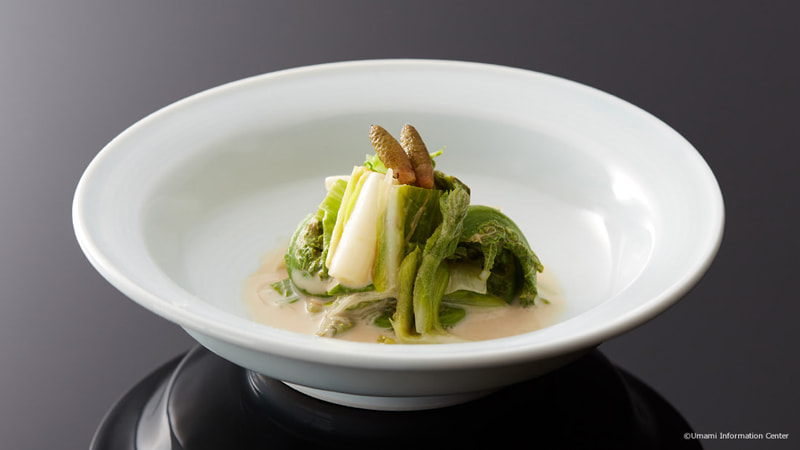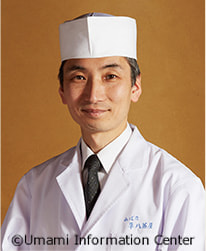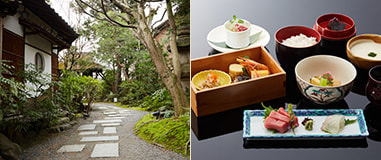SESAME VINEGARED SPRING VEGETABLE AND WILD PLANTS
- Umami in Washoku
- Spring
August 2020

- Edible wild plants like taranome, fuki, urui, kogomi and tsukushi are some of the first vegetables to burst forth in spring. Japanese people hope that by eating them they can absorb some of the season’s useful vigor. Marinating the vegetables for a while makes their taste harmonize a dish full of spring.
■ Ingredients( for 4 persons )
- 100g daikon radish
- 30g carrot
- 4 taranome
- 40g fuki
- 2 urui
- 2 kogomi (sprout of ostrich fern)
- 8 tsukushi (horse tail)
- Sesame vinegar
(50g roasted sesame, 100cc dashi,
20g sugar, 25cc light soy sauce,
5cc vinegar) - 3% salt solution
pinch of salt
pinch of saleratus
dashi
light soy sauce
■ Recipes
- 1. Cut radish and carrot into thin rectangles. Marinate them in 3% salt water.
- 2. Blanch taranome, fuki, urui, kogomi and tsukushi in boiling water with a pinch of salt and saleratus. Soak them in cold water. Peel fuki.
- 3. Cut 2 into proper lengths. Marinate them in a mix of dashi and light soy sauce.
(dashi: light soy sauce = 10:1) - 4. In a mortar, finely grind sesame with a pestle, then add dashi and seasonings.
- 5. Lightly squeeze the moisture out of the vegetables (1 and 3) and mix with 4. Serve.
<Profile>

Shingo SONOBE
the young owner of Yamabana Heihachi-Jaya
Shingo SONOBE, the young 21st owner of Yamabana Heihachi-Jaya, was born in Kyoto in 1970. He graduated from university, trained at a Japanese restaurant for three years and then took over his family’s restaurant. Now while he works as manager and chef at his restaurant, he chairs the Food Education Curriculum of the Japanese Culinary Academy. He engages in various committees such as Kyoto Ryori Mebaekae Kai, a committee to Promote Food Education Curriculums to Learn About Japanese Cuisine, as director. Through his profession, he devotes himself to food education for children. He also works hard to improve culinary knowledge and skills and received a prize for excellent young craft workers from Kyoto City in 2006.
<Store information>

Yamabana Heihachi-Jaya ーEstablished in Tensho era, in the end of 16th century. ー
Heihachi Tea House Inn, established in 1576, is located along the Takano River overlooking Mt.Hiei in the East.
In its Japanese garden you can enjoy cherry blossoms in Spring and colorful leaves of maple trees in Autumn.
At the entrance of Heihachi Tea House Inn stands four-hundred-year old Kigyumon Gate,which was transferred from a Zen Buddhist temple.
The waitresses, dressed in the same style as in old days, welcome you at the gate.
Restaurant Website
